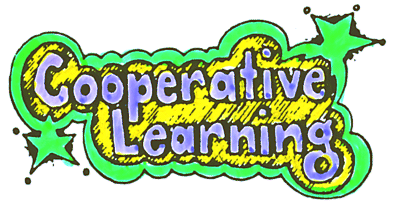French 256: Intermediate Oral French
Edci 335 Pod 3–Yiwei Wu, Yi Yan, Xinxin Wu, Junhao Lin
Description:
Our group topic is teaching intermediate oral French to K-12 students. As the official language of Canada, French shares linguistic features with English since they both belong to the Germanic family. Students who learned English are feasible to learn French because of the similar vocabulary and the usage of grammar. The project is developed based on communication and social interactions, and we aim to arouse students’ interests in learning French and augment students’ French oral competences.
Concept Analysis:
Sociocultural theory (SCT) stresses on an individual’s entity as human beings who have feelings, and it argues that learning is developed through interactions and social activities requiring cognitive and communicative functions within social environments (Lantolf, Thorne & Poehner, 2015). It is worth mentioning that SCT does not refer to Vygotsky’s theory, but a broad theoretical framework, focusing on social and cultural factors in second language learning (Lantolf, 2006), and this theory is not a theory for second language learning (SLL), but a theory that can be applied to SLL.
Debates and group discussions are representative examples of SCT that require individuals to participate and communicate in a social environment. In contrast, Ferris Bueller’s Economics teacher’s class is a counterexample which represents a common misconception of sociocultural theory, namely, the idea that learning is a passive copying process from the experts. This misconception is mainly due to a misinterpretation that social interaction leads to mental 97 functioning development even in a passive way. Therefore, the recognition that this development is an active process is crucial (Lantolf, Thorne & Poehner, 2015).
Sociocultural theory in language learning contains essential features, including Vygotsky’s Zone of Proximal Development (ZPD), activity theory and three stages of the learning process: imitation, assessment and independence. Language learning in the context of SCT requires collaborative learning operating based on activity theory which uses ZPD for learner’s development (Vygotsky, 1997). ZPD includes three zones: learner’s individual performance, potential development with the help from more knowledgeable others, and unreachable performance with or without the help from others (Vygotsky, 1978). The ultimate objective is that, through learning from more knowledgeable others, learners can eventually acquire the knowledge to work independently. In reaching this objective, instructors need to move the zone in and out to yield better results of both individual’s independence development (e.g. private speech, individual task) and feedback from peers and instructors (e.g. roleplay, debate). Imitation, assessment and independence are three stages of the learning process in activity theory. Although imitation seems to occur in the forms of private speech and inner speech and thus considered as an individual learning process, it is essential to note that the act of imitation cannot take place without the object of imitation; SCT in language learning is from social to the individual, and from inter-mental to intra-mental. At the initial stage, learners tend to imitate their instructors or peers when encountering new linguistic affordances (Lantolf, 2006). After receiving feedback from others, learners can improve their performances and work independently.
SCT shares accidental features with cooperative learning which also focuses on social interactions in a learner-centred setting (Johnson, 2009). Both SCT and cooperative learning suggest offering learners more ownership of the activities in a learner-centred learning environment rather than a teacher-centred one. (Behroozizad, Nambiar & Amir, 2014). Autonomous learning allows learners to learn in a more active, creative and engaging way.
Learning Outcomes:
On successful completion of this unit, students will be able to:
- Expand necessary vocabulary to construct and respond to a francophone conversation.
- Improve and develop a more authentic French pronunciation (French standard).
- Be motivated to develop French oral competence with elevated learning interests.
- Evaluate feedback received in the learning process, and improve accordingly.
Sub-topics:
Learning progressions are formed based on four activities:
- Basic instruction (15-20 min)
- Group discussion (20-25 min)
- Dubbing a section of a film (30-35min)
- Detective play (40-45 min)
Assessment:
Student Evaluation
| Activity (grade) | Assessment | Outcomes |
| Basic instruction (10%) | Self-assessment and peers’ feedback | 1, 2 |
| Group discussion (15 %) | Group members give feedback to each other | 1, 4 |
| Dubbing a section of a film (25%) | Instructors and peers give comments and feedback | 1, 2, 3, 4 |
| Detective play (50%) | Instructors grade students on the ability to exchange information in a given context | 1, 3, 4 |
Learning Resources:
Texts/Materials
- Amon, E., Muyskens, J. A., & Hadley, A. O. (2019). Vis-a-vis: beginning French. New York, NY: McGraw-Hill Education.
- Chahi, F., & Biras, P. (2018). Défi Méthode de Français 2. Paris: Editions Maison de Langues.
- Intouchables (Olivier Nakace, Éric Toledano, 2011)
- Les choristes (Christophe Barratier, 2004)
- Scripts of the films
- Detective play role cards
Work Distribution:
| Blueprint | Task Owner |
| Initial group meeting | All members |
| Description | Yi Yan |
| Concept analysis | Yiwei Wu |
| Learning outcomes | Yiwei Wu, Yi Yan |
| Learning activities | Junhao Lin, Xinxin Wu |
| Assessment | All members |
| Interactive Learning Resource | Task Owner |
| Description and overview | Yiwei Wu |
| Activity introduction | All members |
| Outcome and resources | Yi Yan, Junhao Lin |
| Assessment plan and technology usage | Yi Yan, Xinxin Wu |
| Peer review and reference | All members |
Reference:
- Behroozizad, S., Nambiar, R., & Amir, Z. (2014). The Emergence and Development of Language Learning Strategies through Mediation in an EFL Learning Context. Procedia – Social and Behavioral Sciences, 118, 68–75. doi: 10.1016/j.sbspro.2014.02.010
- Johnson, D., & Johnson, R. (2009). An Educational Psychology Success Story: Social Interdependence Theory and Cooperative Learning. Educational Researcher, 38(5), 365-379. Retrieved June 13, 2020, from www.jstor.org/stable/20532563
- Lantolf, J. P. (2006). SOCIOCULTURAL THEORY AND L2: State of the Art: Studies in Second Language Acquisition. Retrieved from https://doi.org/10.1017/S0272263106060037
- Lantolf, J. P., Thorne, S. L. & Poehner, M. E. (2015). Sociocultural theory and second language development. In B. VanPatten & J. Williams (Eds.). Theories in second language acquisition: An introduction (pp. 207-226). New York: Routledge.
- Maftoon, P., & Sabah, S. (2012). A Critical Look at the Status of Affect in Second Language Acquisition Research: Lessons from Vygotsky’s Legacy. BRAIN. Broad Research In Artificial Intelligence And Neuroscience, 3(2), pp. 36-42. Retrieved from https://www.edusoft.ro/brain/index.php/brain/article/view/361
- Vygotsky, L. S., Rieber, R. W., & Veer René van der. (1997). The collected works of L. S. Vygotsky. New York: Plenum Press.
- Vygotsky, L. S. (1978). Mind in society (A. R. Luria, Trans.). Harvard University Press.









